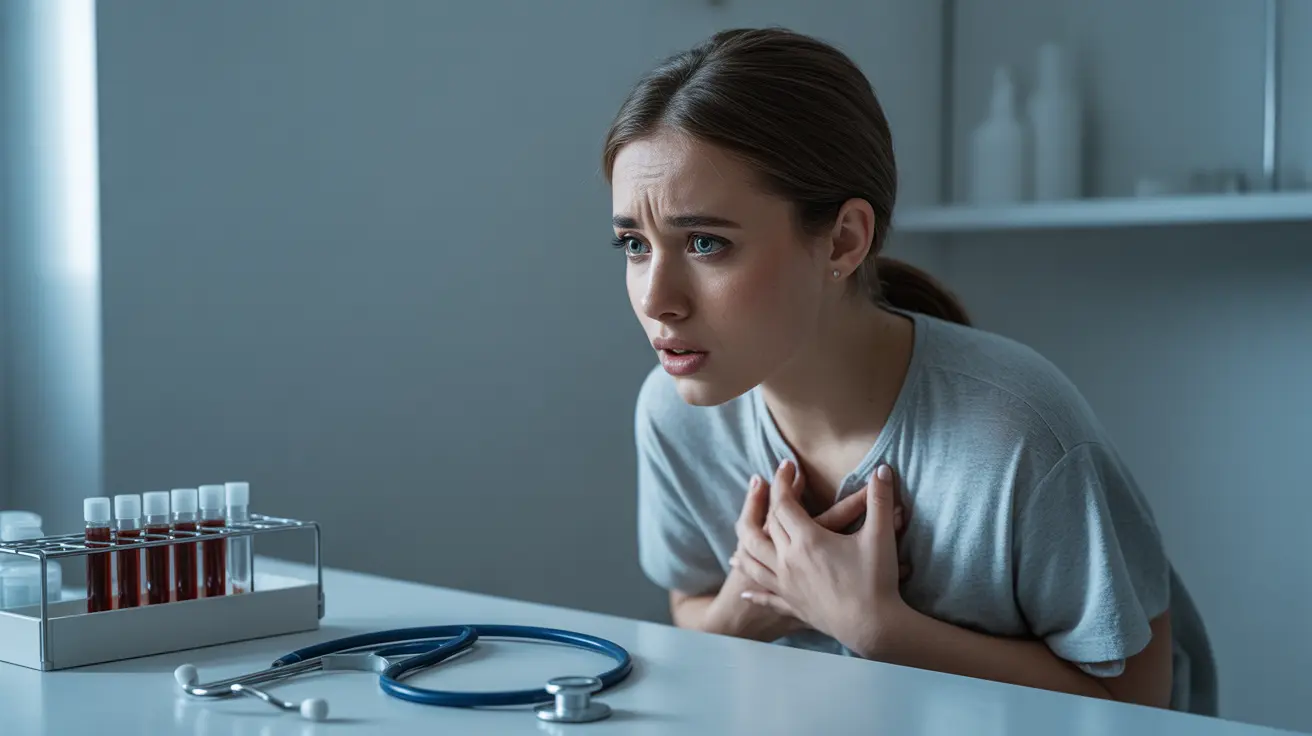Hemophobia, the intense and irrational fear of blood, is a specific phobia that can significantly impact a person's daily life and medical care. This condition goes beyond mere discomfort at the sight of blood – it can trigger severe anxiety responses and even fainting episodes, making routine medical procedures particularly challenging for those affected.
While it's natural to feel squeamish around blood, individuals with hemophobia experience an overwhelming fear that can interfere with necessary medical treatments, blood tests, or even watching medical shows on television. Understanding this condition is the first step toward managing it effectively.
Physical and Emotional Symptoms of Hemophobia
The symptoms of hemophobia can manifest both physically and emotionally, often occurring immediately upon exposure to blood or even the anticipation of seeing blood:
- Rapid heart rate and breathing
- Dizziness or lightheadedness
- Nausea or stomach distress
- Sweating and trembling
- Panic attacks
- Fainting (vasovagal syncope)
Unlike many other phobias, hemophobia frequently triggers a unique vasovagal response, where blood pressure drops suddenly, potentially leading to fainting. This physical reaction distinguishes it from other fear responses and requires specific management strategies.
Understanding the Causes and Risk Factors
Hemophobia can develop through various pathways, and understanding these causes is crucial for effective treatment:
- Traumatic experiences involving blood
- Inherited or learned responses from family members
- Cultural or environmental influences
- Previous negative medical experiences
- Genetic predisposition to anxiety disorders
Research suggests that individuals with a family history of specific phobias or those who have experienced traumatic events involving blood may be at higher risk of developing hemophobia.
Professional Diagnosis and Assessment
Healthcare professionals typically diagnose hemophobia through a comprehensive evaluation process that includes:
- Detailed medical history review
- Discussion of symptoms and triggers
- Assessment of impact on daily life
- Evaluation of anxiety levels
- Ruling out other medical conditions
Mental health professionals use specific diagnostic criteria from the DSM-5 to confirm hemophobia, distinguishing it from general anxiety or other phobias.
Treatment Approaches and Management Strategies
Several effective treatment options are available for managing hemophobia:
Cognitive Behavioral Therapy (CBT)
CBT helps individuals identify and change negative thought patterns and behaviors related to blood exposure. This therapy often includes exposure therapy, where patients gradually face their fear in a controlled, safe environment.
Applied Tension Technique
This specialized technique helps prevent fainting by maintaining blood pressure through muscle tension. Patients learn to:
- Recognize early signs of dropping blood pressure
- Tense large muscle groups strategically
- Maintain tension for specific time intervals
- Release tension gradually
Medication Options
In some cases, healthcare providers may recommend:
- Anti-anxiety medications for acute situations
- Beta-blockers for physical symptom management
- Antidepressants for concurrent anxiety disorders
Frequently Asked Questions
What are the common symptoms and physical reactions of hemophobia? Common symptoms include rapid heartbeat, dizziness, nausea, sweating, panic attacks, and fainting. The unique vasovagal response often associated with hemophobia can cause a sudden drop in blood pressure.
What causes hemophobia and who is most at risk of developing it? Hemophobia can be caused by traumatic experiences, inherited fears, or learned behaviors. Those with a family history of phobias or previous traumatic experiences involving blood are at higher risk.
How is hemophobia diagnosed by healthcare professionals? Healthcare professionals diagnose hemophobia through comprehensive evaluations, including medical history review, symptom assessment, and using DSM-5 criteria to confirm the specific phobia diagnosis.
What treatment options are available to overcome the fear of blood? Treatment options include cognitive behavioral therapy, exposure therapy, applied tension technique, and in some cases, medication. The approach is often tailored to individual needs and severity of symptoms.
How can applied tension therapy help prevent fainting in people with hemophobia? Applied tension therapy works by teaching patients to maintain blood pressure through systematic muscle tensing. This technique helps prevent the vasovagal response that leads to fainting when exposed to blood.




